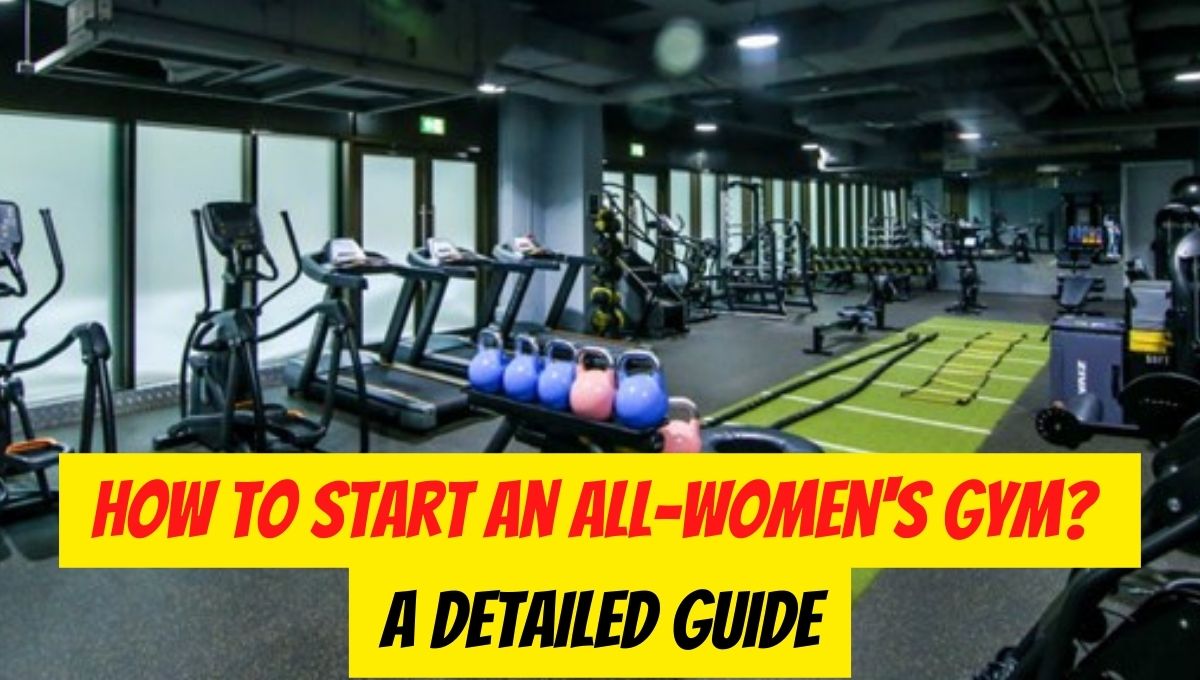To start an all-women’s gym, begin by completing legal requirements such as obtaining an Employer Identification Number (EIN), registering for taxes, and securing necessary licenses and insurance.
It’s important to note that the specific requirements can vary depending on your location and the type of gym you plan to open.
Consulting with local authorities, legal professionals, or business advisors is advisable to ensure full compliance with all relevant regulations.
Once the legal issues are taken care of, make sure that you:
- Chosen a strategic location, equip your gym with fitness equipment tailored to women’s needs, and emphasize branding and marketing focused on female clientele.
- Ensure a welcoming and safe environment, hire experienced staff, and foster a sense of community among members.
- Continuously gather feedback and adapt your services to meet the specific preferences and expectations of your target audience.
However, if you want to open a gym franchise, you have to select your franchisor, contact them, get financing, select a location, attend training, and you are good to go.
Gym Licenses and Permits Cost:
The cost of a gym license in the United States can vary significantly depending on several factors:
- Location: The cost of licenses and permits can vary from state to state and even within different cities or counties. Each local government may have its own fee structure.
- Type of Gym: The type of gym you’re opening, whether it’s a small independent gym, a franchise, or a specialty fitness center, can impact the licensing costs. Different types of gyms may require different permits.
- Business Structure: Your gym’s legal structure (e.g., sole proprietorship, LLC, corporation) can affect the licensing fees. Each business structure may have specific requirements and costs associated with it.
- Additional Services: If your gym offers additional services such as childcare, food and beverage services, or spa facilities, you may need additional permits and licenses, which can increase the overall cost.
- Renewal Fees: Keep in mind that licenses and permits often need to be renewed annually or periodically, and there may be associated renewal fees.
- Legal and Consulting Fees: It’s common for business owners to seek legal and consulting assistance when obtaining licenses and permits, which can add to the overall cost.
To determine the exact cost of a gym license in the U.S., you should contact your local city or county government offices, as well as state regulatory agencies, to inquire about the specific requirements and fees for your location and type of gym. It’s advisable to consult with legal and business professionals who can guide you through the licensing process and provide you with accurate cost estimates based on your individual circumstances.
Equipment Needed to Start a Women’s Gym:
Starting a women’s gym requires careful selection of fitness equipment that caters to the specific needs and preferences of your target demographic. Here’s a list of essential gym equipment to consider:
- Cardiovascular Equipment:
- Treadmills
- Stationary bikes
- Elliptical trainers
- Rowing machines
- Stair climbers
- Spin bikes (for spinning classes)
- Strength Training Equipment:
- Dumbbells (in various weights)
- Barbells and weight plates
- Resistance bands
- Kettlebells
- Strength training machines (e.g., leg press, chest press, lat pulldown)
- Functional training equipment (e.g., TRX suspension trainers)
- Smith machines
- Core and Stability Equipment:
- Yoga mats
- Stability balls
- Medicine balls
- Foam rollers
- Ab benches
- Bosu balls
- Group Exercise Equipment:
- Step platforms
- Aerobic and Zumba dance mats
- Resistance bands for group classes
- Group exercise music and sound systems
- Mirrors for group exercise areas
- Stretching and Flexibility Equipment:
- Stretching stations or designated areas
- Foam rollers
- Yoga blocks and straps
- Pilates reformers (if offering Pilates classes)
- Functional Training and Accessories:
- Agility ladder
- Battle ropes
- Plyo boxes
- TRX suspension trainers
- Resistance bands
- Suspension systems
- Hygiene and Safety Equipment:
- Hand sanitizing stations
- Cleaning supplies and disinfectants
- First aid kit
- AED (Automated External Defibrillator) for emergencies
- Lockers or storage for personal belongings
- Aesthetics and Comfort:
- Proper gym flooring (e.g., rubber flooring for weightlifting areas)
- Mirrors for form checks and self-assessment
- Adequate lighting and ventilation
- Comfortable seating and waiting areas
- Technology and Tracking Tools:
- Fitness tracking equipment (e.g., heart rate monitors)
- Gym management software for member sign-ups and scheduling
- Sound systems for background music or group classes
- Specialized Equipment (Optional):
- If your gym offers specialized programs such as CrossFit, barre, or pole fitness, you may need equipment specific to those activities.
When choosing equipment for a women’s gym, consider the diversity of your clientele and their fitness goals.
Ensure that your gym is welcoming, safe, and equipped to accommodate women of all fitness levels. Regular maintenance and cleanliness are crucial to provide a positive workout environment.
Additionally, consult with fitness equipment suppliers and industry experts to make informed decisions based on your budget and space constraints.
Final Thoughts
Opening an All-Women’s gym is one of the best investments you can make. But before doing so, it is crucial to know all the requirements for opening a gym.
Therefore, if you are planning to start a gym, make sure to check out the information provided in this article.
Wishing you the best of luck in starting the gym business. 🙂
